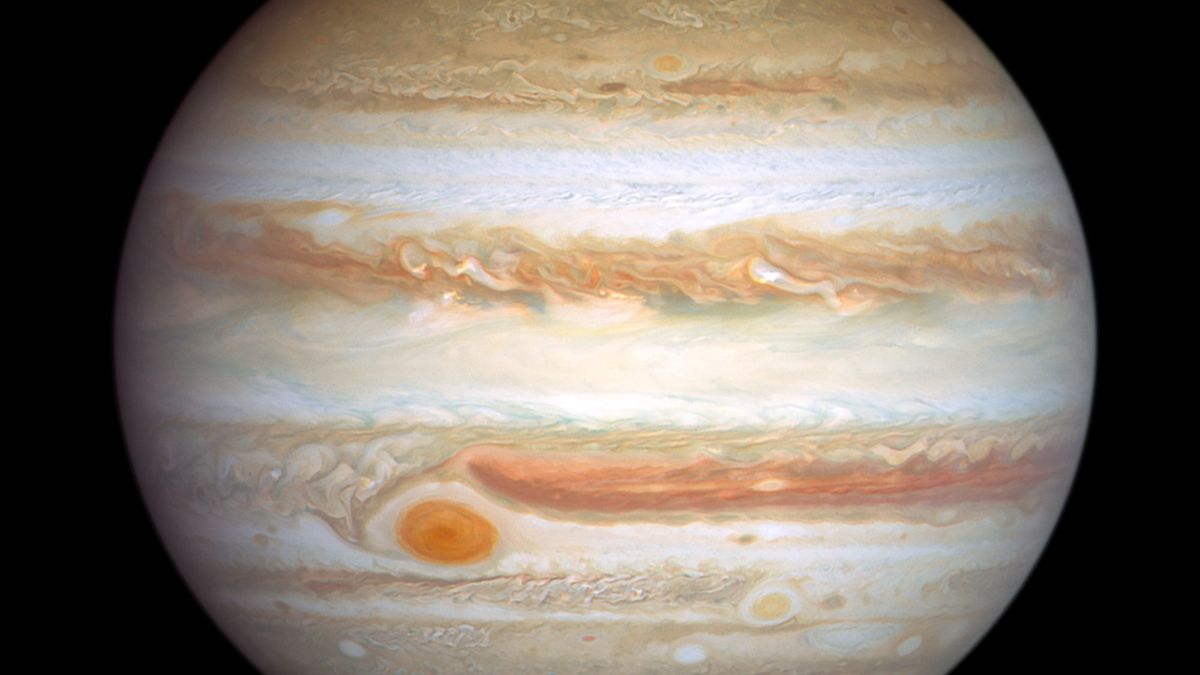What makes up the matter we perceive in the universe?
To start, there are the usual suspects, like electrons, protons, quarks and neutrinos. But if those particles aren't strange enough for you, I'm here to help.
There are other particles that are so rare, we're not even sure they exist. Here are five of the weirdest, rarest hypothetical particles in the universe.
Dark photon
Everybody loves the photon. It gets along with so many other particles. It has an infinite range. It makes flashlights work. But it may not be the only kind of photon out there. Enter the dark photon, which is like a regular photon but just … dark.
The motivation for the dark photon comes from the mysteries of dark matter and dark energy. Dark matter is some invisible form of matter that makes up most of the mass of almost every galaxy and, all told, accounts for roughly 25% of the universe's energy. Dark energy is responsible for the accelerated expansion of the universe and makes up 70% of the contents of the cosmos.
Among the many questions facing cosmologists is just how simple or complicated these dark components are. We know that regular matter is fascinatingly complex, with a wide variety of particles and forces at play. Is the dark sector, as it's called, big, simple and dumb, or is it as rich and varied as the light side of the universe?
If the dark sector is complex, there may be additional forces of nature that operate only between dark matter and/or dark energy, and dark photons would be the carriers of those forces. No searches have discovered any evidence for dark photons yet, but we still have a lot to learn.
Related: Hypothetical 'dark photons' could shed light on mysterious dark matter
Curvaton
Let's go back to the earliest moments of the Big Bang. Cosmologists believe that our universe underwent a period of incredibly rapid expansion known as inflation. Powering this event was some mysterious substance in the universe, known as the "inflaton" (which was basically like dark energy on steroids).
Inflation is still hypothetical, but it does have one powerful prediction under its belt: cosmic structure. The statistical properties of structures in our universe match what we expect from cosmic inflation, so we believe this dramatic event laid the foundation for the stars, galaxies and clusters that would emerge later.
Despite this success, inflation has some thorny issues. For one, it's difficult to build models of inflation that are "natural" — in the sense that they start and end without any fine-tuning — and still generate the seeds of cosmic structure. To get around this, some theorists have proposed a companion to the inflaton, dubbed the curvaton.
The job of the curvaton is to sit around and wait while inflation does its thing. Then, the curvaton steps in and lays the groundwork for structure. The advantage of this approach is that inflation models can be more "natural," because we're not forcing one entity — the inflaton — to do all the work in the early universe.
The downside of this approach is that we're replacing one hypothetical entity with two, which doesn't exactly ease concerns that maybe we're getting the whole inflation picture wrong. But the curvaton is worth investigating anyway, because research in that direction might open up a promising avenue. Besides, it has a really cool name.
Glueball
The carrier of the strong force is a particle known as the gluon, of which there are nine varieties.
Here's the fun thing about gluons: They can feel the strong force, too. So our best models of the proton tell us that gluons are hot messes of strong force interactions. And they're not the only hot messes of strong force interactions. The protons and neutrons have three quarks (and gluons), and there's a whole family of particles called mesons, which contain two quarks (and gluons).
So we've got all these combinations of quarks and gluons held together with the strong nuclear force. But if gluons feel the strong nuclear force anyway, why don't we just skip the quark part? Why make it so complicated? Just keep it simple. And that's how we came up with the glueball, which is a hefty particle made of nothing more than a collection of gluons … glued together.

What makes the glueball so elusive is that it's incredibly ephemeral, with a lifetime of less than a microsecond. This isn't that surprising; every combination of quarks and gluons, except the proton, is also unstable in isolation. But the glueballs are expected to have exceptionally short lifetimes; otherwise, we would've seen them just floating around in our backyards by now.
But glueballs also have predicted masses in the range of just about every other composite particle. So we might be making it but not realizing it, because when we see a surprising new particle in a collider, we typically get to quantify only its mass. This means we have observed plenty of candidate glueballs going back to 2013, but what we saw could also be other particles that are much less exotic.
Nowadays, there are entire experiments, like GlueX, devoted to finding glueballs. It's the last major prediction of the Standard Model still standing, so it's worth searching for these odd particles.
X17
We've been trying to move past the Standard Model of particle physics pretty much since we invented it. And in 2015, physicists got a signal that something might be wrong,at ATOMKI, the Hungarian Institute for Nuclear Research.
The team had assembled an apparatus to search for dark photons. The setup involved firing protons at lithium-7, which then transformed into beryllium-8 nuclei, which then decayed and produced pairs of electrons and positrons. Those pairs flew off at various angles, and scientists used nuclear physics calculations to predict the spread of those angles. If they got more of those particles than they expected, it might have been because dark photons were getting involved.
And indeed, the Hungarian team found extra electrons and positrons. To recreate the signal, there had to be a new particle with a mass of 17 MeV (34 times the mass of the electron), so this mysterious new particle got a name: X17.
In the following years, the Hungarian team has built up an impressive list of accomplishments, all of which point to the reality of this new particle, including statistical significance of over 6 sigma, and work with collaborators to find similar signals.
Nonetheless, most of the mainstream physics community has doubts about X17. All of the "independent" confirmations have some sort of fingerprint from the original Hungarian team, and nobody outside that network has been able to reproduce the effect.
Also, there are some relatively plausible explanations for the anomaly that arise from the detector setup's geometry. Given that we don't see any new evidence for the particle, as much as I would like X17 to exist, I'm not going to get my hopes up yet.
Preon
You've got your elements, like helium and aluminum. They are made of fundamental particles, like the proton, neutron and electron. But those are made of even smaller things: quarks. So why stop there? Maybe what we call the fundamental particles of the universe are really composite structures of even smaller objects, the preons (as in "pre-quarks," not to be confused with prions.
One of the biggest motivations for preons is that many particles are extremely similar to each other but differ only in some small way. For example, the electron and positron differ only in charge, and the electron and the muon differ only in mass. We currently have no explanation for these nearly identical properties, so we suspect they may arise from some other interactions.
Preons have been proposed to explain … well, just about every outstanding problem in the Standard Model, from why there are only three generations to what dark matter is. But nothing ever seems to stick, and that's because no experiment has given any hint that quarks and leptons are composite particles. We try as hard as we can to smash them apart, but they just keep being themselves.
.png)
 2 weeks ago
12
2 weeks ago
12



































 Bengali (BD) ·
Bengali (BD) ·  English (US) ·
English (US) ·